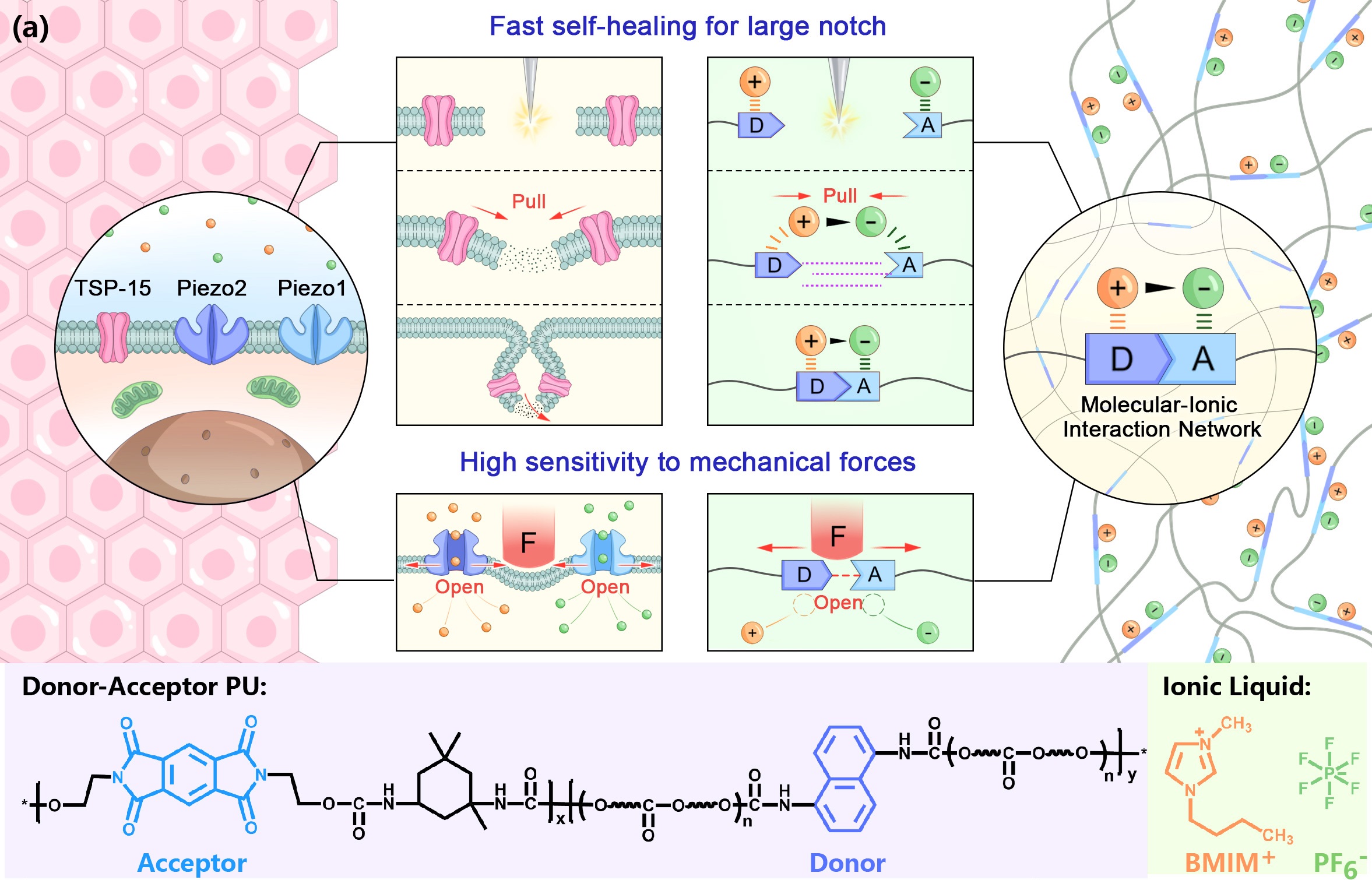The Bio-Based Polymer Materials Group led by Prof. ZHU Jin at the Ningbo Institute of Materials Technology and Engineering (NIMTE) of the Chinese Academy of Sciences (CAS), developed a novel mechano-responsive elastomer, i-DAPU, achieving high-performance iontronic skin integrating self-healing and synchronous sensing.
The study was published in Advanced Functional Materials.
Biomimetic flexible sensors have addressed global attention in the intelligent tactile perception field. Using mechano-responsive elastomer as dielectric material, iontronic skin is a representative emerging category of biomimetic flexible sensors. The iontronic skin can replicate the soft touch and self-healing properties akin to human skin after injury, and imitate the pressure-sensing function of receptor cells.
However, previous studies mainly focused on improving single function, with less emphasis on the synchronous enhancement of self-healing efficiency and sensitivity in intronic skin.
Inspired by transmembrane proteins like TSP-15, Piezo 1, and Piezo 2, which can recruit repair factors thus facilitating cellular membrane self-repair, researchers at NIMTE engineered multifunctional molecular-ionic regulatory sites within a polyurethane/ionic liquid (PU/IL) composite system.
Donor(D)-acceptor(A) self-assembly groups were integrated into the main chain of polyurethane, and then co-blended with the ionic liquid [BMIM]+[PF6]-, thus contributing to a novel mechano-responsive elastomer, i-DAPU.
Utilizing i-DAPU as the dielectric material, the developed iontronic sensor, i.e., DA-skin, achieved excellent traction-assisted self-healing efficiency of 72 μm min-1 and superior dual-channel synchronous sensitivity of 7012.05 kPa-1.
Furthermore, the DA-skin was applied in clinical medicine for subtle change detection in muscle strength. Based on deep learning algorithms for signal processing, intelligent muscle strength level classfication was achieved with an impressive accuracy rate of 99.2%.
This work provides new design concepts and research strategies for developing high-performance iontronic skin and shows great promise for healthcare applications.

Fig. High-performance iontronic skin with excellent self-healing efficiency and sensitivity (Image by NIMTE)
Contact
Chen Chao
Ningbo Institute of Materials Technology and Engineering
E-mail: chenchao178@aliyun.com

